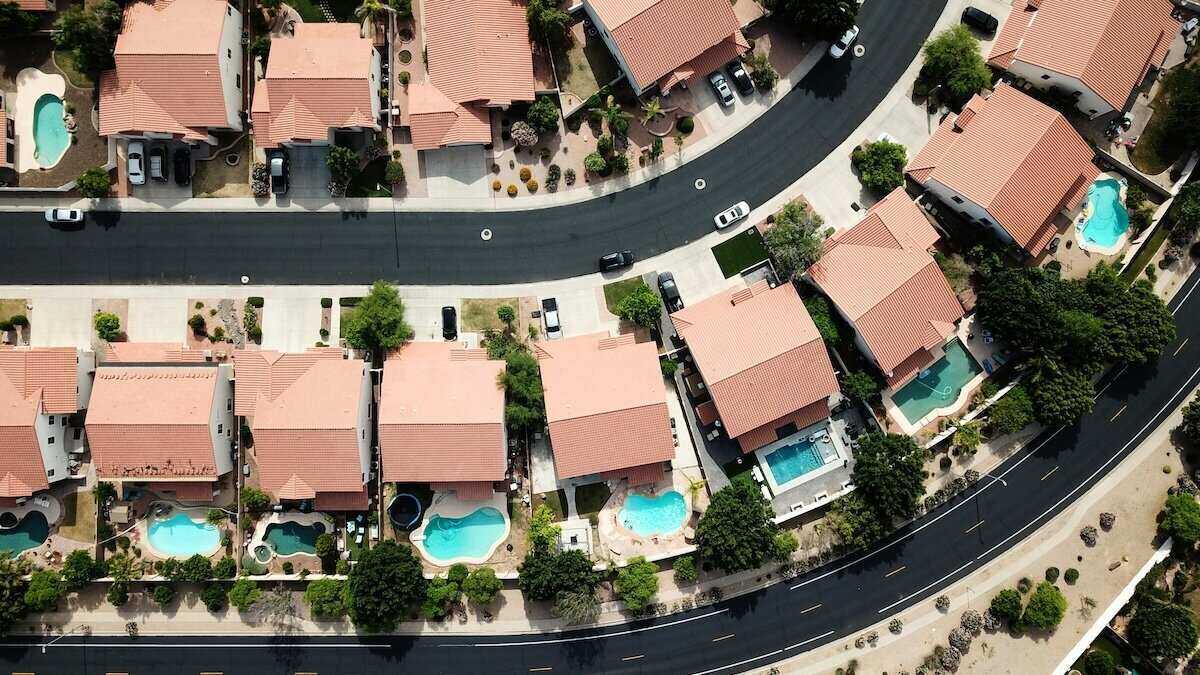Subdividing land means to turn one block into two or more lots, each with its own title. If you have a vacant block, a big backyard, or land that was once rural but is now part of a growing town, subdividing and either building a new dwelling or selling the extra lot could lead to a solid profit.
However, subdividing and developing land isn't always a guaranteed win. Here's how to tell if you're on track for a successful subdivision development.
What is subdivision?
Subdivision can allow a landowner to unlock value by creating multiple saleable or developable lots from a single piece of land. But it can be tricky and arduous. It's a task that not everyone is willing to take on.
If you are willing and able, subdivision can prove a fruitful development strategy - but only if you're careful to avoid the many potential pitfalls.
There are many types of subdivision that can be performed in Australia:
-
Residential subdivision
Splitting land in residential areas to create new housing lots. -
Rural subdivision
Dividing large, rural plots of land for the likes of hobby farming, eco-tourism, or residential purposes. -
Strata subdivision
Converting a building into individually owned units or apartments with shared ownership of common areas (e.g., hallways, gardens). -
Community title subdivision
Similar to a strata subdivision but involves more complex shared facilities, like parks or recreational areas, with a community management structure.
If you have a large plot of land, you might find subdividing it increases its total value by creating smaller, more affordable parcels that attract a wider pool of buyers. You might also subdivide land and build upon it yourself, either to sell the new dwelling or to procure a new investment property.
When does subdivision make sense as an investment strategy?
Of course, subdividing will only work as an investment strategy if your property is large enough to accommodate a new lot – whether than be just one or multiple.
Property owners with an older house in a desirable location are typically best positioned to profit from subdivision, A Game Property Advisory director and head buyer's advocate Jim Malamatinas told Your Mortgage.

Image: Jim Malamatinas, supplied
"What most people are doing to make a profit is looking at really established areas and building new houses in them," he said.
"Older houses in high-growth areas, or areas that are highly attractive for other reasons, are popular candidates for subdivision into two, three, or even four lots, depending on the size of the land.
"That would involve knocking down the existing house and then erecting those dwellings - whether it's a side-by-side duplex or many townhouses in a row."
Subdividing one property with a large backyard into two, leaving the existing house standing, can also be an advantageous investment strategy.
"If people have a big corner block of land, they can cut off the backyard and the backyard will have street frontage. You can then build a townhouse that's street fronted," Mr Malamatinas said.
"If it's not a corner block, but has 15 metres of street frontage or more, then they could literally cut the backyard off, leave a common driveway, and build in the rear of that house."
How to subdivide land: A step-by-step process
But subdividing and developing land isn't always simple, and investing time and effort into doing so mightn't provide worthwhile returns. Here's a simple overview of how the process typically works:
1. Assess whether your land is suitable for subdivision
The first thing a prospective subdivider should do is compare their property to the local council's regulations on what can and cannot be subdivided. There'll likely be rules regarding minimum land sizes, access, and services that must be adhered to. Architects, draftspersons, and town planners are key people to have on your side throughout this process.
You might also need to order a contour and identification survey, as these could be required in later applications.
2. Approach your local council & apply for development approval
The next step is to consult with your local council for specific information about the zoning of your land and advice on any additional requirements or considerations, such as environmental impact assessments or community concerns.
Next, you'll need to apply for development approval. This application will likely demand detailed subdivision plans, surveys, and supporting documents.
3. Adhere to conditions
If your application is approved, it will likely come with a set of conditions you'll need to meet before final approval. For example, if you're subdividing a large block, you may be responsible for installing infrastructure such as roads and services.
If you receive conditions you believe are unfair, you can likely contest them. But beware, doing so could stretch out the timeline of your subdivision development.
4. Begin the process of subdividing and developing
With approval in place and any initial conditions met, you may start developing the land into separate lots following the subdivision plan and, if applicable, laying roads, pathways, and utilities.
Depending on the scale of your development, you might want to engage a project manager and civil engineers to ensure everything proceeds according to plan and within budget.
5. Get your council's tick of approval & submit for titling
Once any necessary construction is complete and all conditions are fulfilled, your council will likely carry out a final inspection. If everything is in order, it'll issue a subdivision certificate.
You'll probably then submit the necessary documentation to your state or territory's land titles office to officially create separate titles for each new lot. Once they're issued, you're free to sell or develop the new lot or lots.
How much does it cost to subdivide land?
Subdividing and developing land as an investment strategy involves dozens, if not hundreds, of expenses. To start with, you'll need to pay for the land you're planning to subdivide, as well as transaction costs such as stamp duty, not to mention loan interest.
After that, the subdivision process itself can be pricey, though actual costs can vary widely depending on your local council and the land you're subdividing. To gauge a rough idea of what you might be up for, we've compiled a brief lift of common costs:
1. Subdivision Process Costs
Council fees and application costs can include:
-
Development application fees: Can range from around $1,000 to more than $10,000
-
Planning permits: Depending on the complexity of the project, these can cost anywhere from a couple of hundred dollars to a few thousand dollars
-
Title registration fees: Registering each new lot could also cost a couple of hundred dollars
You might also need to foot the bill for professionals such as:
- Surveyors
- Town planners
- Civil engineers
- Draftspersons
2. Infrastructure and connection costs
Subdividing land often means extending or connecting essential utilities and infrastructure.
-
Water, sewage, and electricity connections: These costs can be substantial, depending on the complexity of the project and location of existing utilities.
-
Roads, drainage, and other infrastructure: You could be out of pocket in a big way if you're required to build or extend public roads, install drainage systems, or develop other public infrastructure.
3. Demolition and building costs
Building and demolition costs can majorly impact your bottom line if your subdivision project involves demolishing an existing structure or constructing a new dwelling (or both). A property owner who isn't fully informed might find that, by the time they've paid to subdivide their land and build a new dwelling, their entire profit margin has been eaten away.
Even if you're not building, you may still need to pay for fencing to separate the new lots.
4. General holding costs
If the subdivision process is delayed or takes longer than expected, the typical costs of holding a property can start to snowball:
-
Mortgage interest: The interest on your loan can become a significant cost, especially if your project stretches over months or years.
-
Council rates: You'll need to pay council rates on the property throughout the subdivision process.
5. Legal and tax considerations
There is likely to be several legal and tax-related costs related to the subdivision process, and you may want to consult legal and tax professionals to help navigate these.
Can you get a mortgage to subdivide a property?
Yes, you can get a mortgage on a property you're planning to subdivide or develop for a profit. If you already own the property, you could also take out a loan for the funds needed to subdivide.
Here are a few ways you might finance your subdivision project:
Home equity
If you already own the property you're planning to subdivide, or you have substantial equity in another property, you could tap into that equity to fund the project.
-
This typically involves refinancing to a larger home loan, allowing you to access the equity built up in your property.
-
Some banks and lenders offer home loan 'top-ups', which can be used to access equity.
Construction home loan
If you're planning to subdivide and build, a construction home loan may be an option.
-
These loans provide funds in stages as the building progresses, and you'll only pay interest on the money that's been drawn upon at a given time.
-
Construction loans can be useful when building on newly subdivided lots, as they align payments with the progress of construction.
Property development loan
If you're planning a larger-scale subdivision (for instance, if you're building multiple homes on a single lot), a property development loan may be a better fit.
-
Development loans are specialised finance products designed for larger projects. They typically allow a person to borrow more than they can with a standard home loan, but may come with stricter requirements.
-
It's worth reaching out to your preferred lender to see if it offers development loans and to learn if you and your project qualify for one.
Other ways to finance a subdivision
Of course, you might choose to fund your subdivision with cash, if you have enough spare.
You could also turn to a personal loan product if you're confident your costs will stay relatively low. Most lenders only allow a borrower to access up to $100,000 with a personal loan.
Common pitfalls faced when subdividing property
"Everyone thinks [subdivision] is super easy," Mr Malamatinas said. "But every single council in Australia has its own rules and regulations when it comes to planning schemes.
"Being on top of your local council's planning schemes and its requirements is critical."
You can approach your council to learn about its regulations on subdividing and developing land yourself, or you can engage an architect or draftsperson who might have more experience with councils' intricacies.
Another notable consideration worthy of close attention is whether you can sell the subdivided property for a profit, after factoring in the cost of seeking permits, construction, and unexpected expenses.
See also: Building vs buying an investment property
It's crucial to crunch the numbers and add in a contingency for unexpected costs such as:
-
Delays in council approvals or regulatory changes
-
Unexpected construction or infrastructure costs
-
Market risks (like interest rate hikes or changes in property values)
"A lot of people aren't really making any money out of subdivision," Mr Malamatinas said.
"You've got to question whether it's worth taking the risk and taking out a loan to do something if you're not going to make a profit on, unless you've got a longer term strategy and you want to keep [the subdivided property]."
Other things to consider include whether any properties on the street you live or are buying on have been subdivided before, as precedence generally helps get plans across council lines. It's also worth taking a hard look at your property's title to ensure subdivision is allowed and taking note of any easements that could create drama when developing.
Image by Avi Waxman on Unsplash
Collections: Property Investment




Share